Amur Leopard
- February 13, 2024
- 0 comment
The Amur Leopard, a magnificent and enigmatic big cat, stands as one of the rarest and most endangered feline species on the planet. Residing in the temperate forests of the Russian Far East and parts of northeastern China, this elusive predator captures the imagination with its striking appearance and solitary nature. Adorned with a luscious coat of golden-orange fur marked by intricate black rosettes and spots, the Amur Leopard epitomizes beauty and grace in the wild. However, behind its captivating facade lies a poignant tale of survival in the face of relentless threats. With its habitat under siege from deforestation, infrastructure development, and illegal logging, coupled with the persistent menace of poaching and human-wildlife conflict, the Amur Leopard teeters on the brink of extinction.
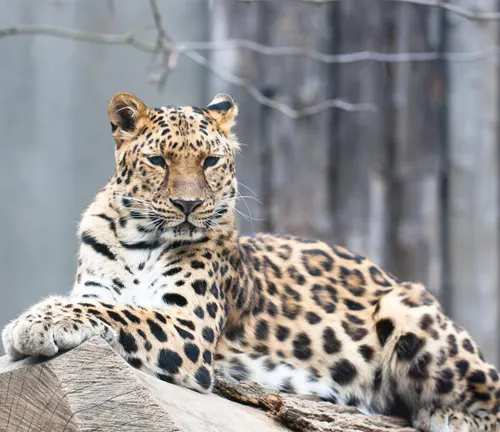
Despite these challenges, dedicated conservation efforts spearheaded by organizations like the World Wildlife Fund (WWF) and the Amur Leopard and Tiger Alliance (ALTA) offer hope for the species’ future. Through research, habitat protection, and community engagement, these initiatives strive to safeguard the Amur Leopard and ensure its place in the natural tapestry of the Russian Far East. As a symbol of resilience and the fragility of our planet’s biodiversity, the Amur Leopard serves as a poignant reminder of the urgent need for conservation action to preserve our planet’s most iconic species for generations to come.
| Aspect | Description |
|---|---|
| Scientific Name | Panthera pardus orientalis |
| Common Name | Amur Leopard |
| Habitat | Temperate forests of the Russian Far East and parts of northeastern China |
| Distribution | Primarily in the Amur River basin and the Primorye region |
| Coat Color | Golden-orange with distinctive black rosettes and spots |
| Size | Medium-sized big cat, with males larger than females |
| Weight | Males: 37-48 kg (82-106 lbs), Females: 25-42 kg (55-93 lbs) |
| Length | Body: 90-105 cm (35-41 in), Tail: 80-90 cm (31-35 in) |
| Adaptations | Camouflaged coat for stealthy hunting, powerful limbs for agility |
| Diet | Varied diet including deer, wild boar, hares, and small mammals |
| Hunting Techniques | Stealth and ambush tactics, relying on agility and surprise |
| Population | Estimated fewer than 100 individuals remaining in the wild |
| Conservation Status | Critically endangered |
| Threats | Habitat loss, poaching, human-wildlife conflict |
| Conservation Efforts | Led by organizations like WWF and ALTA, focused on habitat protection and awareness |
| Importance | Apex predator, crucial for ecosystem balance and biodiversity conservation |

The Amur Leopard (Panthera pardus orientalis) is one of the most elusive and endangered big cats in the world. Native to the temperate forests of the Russian Far East and parts of northeastern China, this magnificent feline has captivated the attention of conservationists and wildlife enthusiasts alike.
Habitat and Distribution
Overview of habitat
Amur Leopards primarily inhabit the temperate forests of the Russian Far East, including the Amur River basin and the Primorye region. These forests are characterized by dense vegetation, rugged terrain, and a variety of prey species.
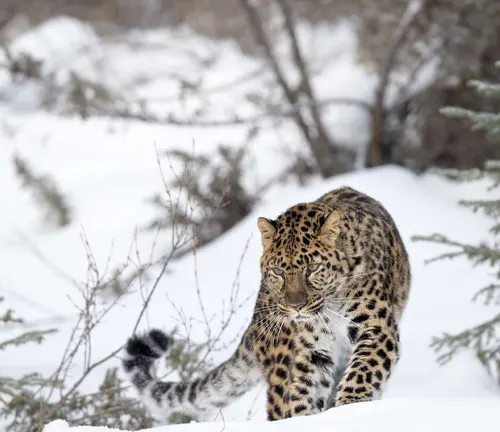
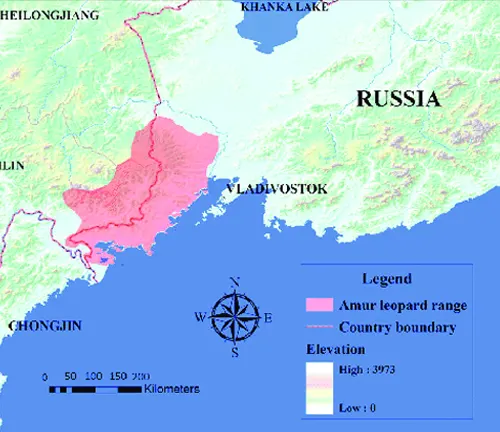
Geographic distribution
The historic range of the Amur Leopard extended into parts of China and Korea, but due to habitat loss and fragmentation, their current distribution is limited to small pockets in Russia and China.
Habitat threats
Despite being well-adapted to their forest habitat, Amur Leopards face significant threats from habitat loss, poaching, and human-wildlife conflict. Deforestation, infrastructure development, and illegal logging have led to the fragmentation of their habitat, making it increasingly difficult for these animals to find suitable territory.

Physical Characteristics
The Amur Leopard is known for its stunning coat, which features a vibrant golden-orange hue with distinctive black rosettes and spots. This camouflage helps them blend seamlessly into their forest surroundings, making them formidable hunters.
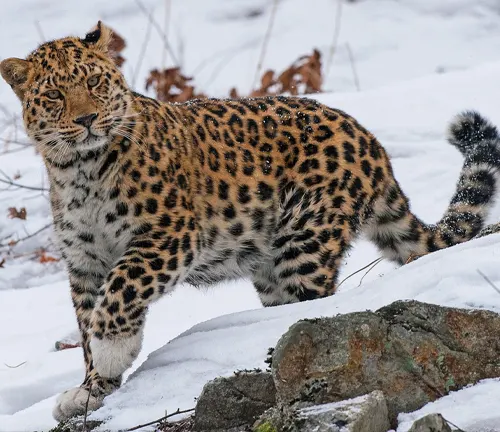
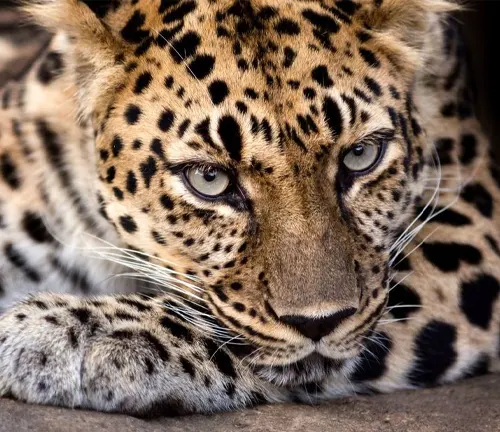
- Coat: The most striking feature of the Amur Leopard is its coat, which typically ranges from a vibrant golden-yellow to a pale, creamy color. The coat is adorned with large, solid black rosettes and spots that help camouflage the leopard in its forest habitat.
- Size: Amur Leopards are medium-sized big cats, with males typically larger and heavier than females. Adult males can weigh between 37 to 48 kilograms (82 to 106 pounds), while females generally weigh between 25 to 42 kilograms (55 to 93 pounds).
- Body: The body of an Amur Leopard is sleek and muscular, with a long and flexible spine that enables agility and swift movements. Their bodies are well-suited for navigating the dense vegetation of their forest habitat and for stalking prey.
- Limbs: Amur Leopards have powerful limbs equipped with retractable claws, which they use for climbing trees and grasping prey. Their strong hind legs enable them to leap long distances, making them formidable hunters.
- Tail: The tail of an Amur Leopard is long and thick, measuring between 80 to 90 centimeters (31 to 35 inches) in length. The tail aids in balance and coordination during hunting and climbing activities.
- Facial Features: Amur Leopards have a distinctive facial profile, characterized by a broad skull, strong jaws, and keen eyesight. Their ears are small and rounded, with tufts of fur at the tips.
- Adaptations: To survive in their cold, forested habitat, Amur Leopards have developed thick fur and a dense undercoat that provides insulation against the harsh winter weather. They also have large nasal cavities that help warm and humidify the cold air they breathe.
Diet and Hunting
Prey selection
The Amur Leopard, a master of its domain in the dense forests of the Russian Far East, has honed its predatory instincts over centuries of evolution. One of the key aspects of its survival strategy lies in its discerning choice of prey. Despite its adaptable nature, the Amur Leopard exhibits a preference for certain species that are abundant in its habitat.

Among its favored prey are the majestic Siberian roe deer (Capreolus pygargus), known for its sizeable population and availability throughout the leopard’s range. These deer provide a substantial source of sustenance for the leopard, offering ample nutrition to fuel its predatory pursuits.
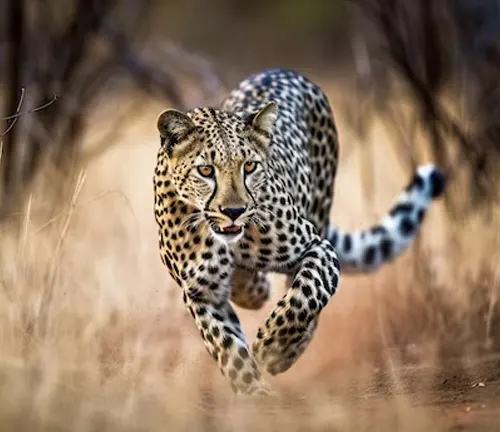
Hunting techniques
In the shadowy depths of the forest, the Amur Leopard employs a repertoire of hunting techniques that showcase its prowess as a silent and efficient predator. Unlike its counterparts on the African savannah, the Amur Leopard relies less on speed and more on stealth to ambush its unsuspecting prey.
Daily food requirements
As a top predator in its ecosystem, the Amur Leopard has formidable dietary needs to sustain its active lifestyle and maintain optimal health. While individual food requirements may vary depending on factors such as age, sex, and reproductive status, adult leopards typically consume between 2 to 3 kilograms of meat per day.
To meet this daily food requirement, the Amur Leopard must successfully capture and consume prey on a regular basis, often hunting multiple times throughout the day or night to ensure an adequate food supply. Failure to secure enough food can have dire consequences for the leopard, leading to malnutrition, starvation, and weakened physical condition.
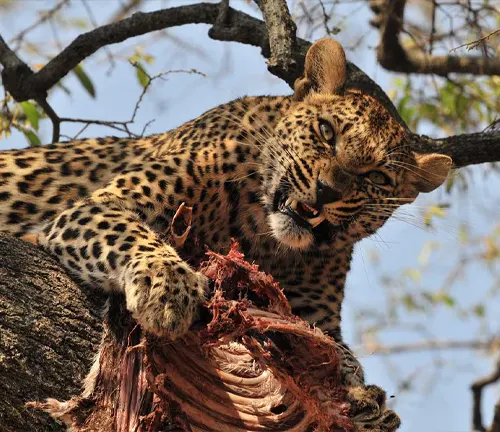
Reproduction and Life Cycle
Mating behavior
In the secluded realm of the Russian Far East’s temperate forests, the Amur Leopard embarks on a delicate dance of courtship and mating behavior. This secretive ritual, shrouded in the dappled light of the forest canopy, plays a vital role in ensuring the survival of this critically endangered species.
During the mating season, which typically occurs between January and February, male Amur Leopards embark on a quest to find a suitable mate. Through a combination of scent marking, vocalizations, and territorial displays, males advertise their presence and prowess to potential mates, signaling their readiness to reproduce.
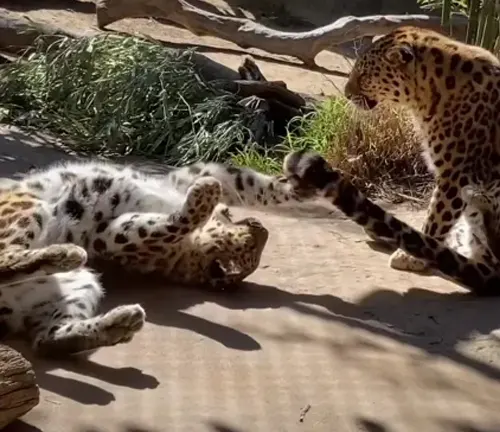
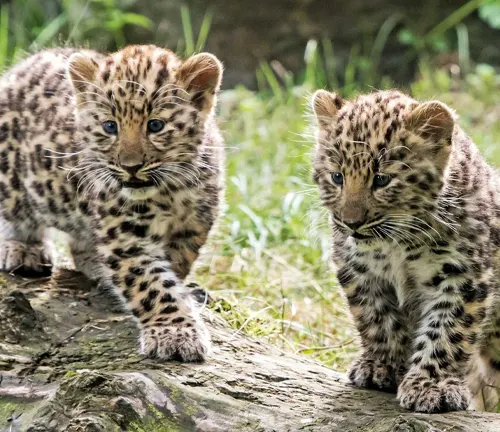
Rearing of cubs
As spring blooms in the Russian Far East, female Amur Leopards retreat to secluded dens hidden deep within the forest, where they give birth to their precious offspring. These dens, often located in rocky crevices or dense vegetation, provide a safe haven for the vulnerable cubs during their earliest days of life.
After a gestation period of approximately three months, female Amur Leopards give birth to a litter of 2 to 3 cubs, each weighing only a few pounds at birth. The mother, possessing an innate maternal instinct, lavishes care and attention on her newborn offspring, nursing them with nutrient-rich milk and keeping them warm and protected from the elements.
Conservation Status
The conservation status of the Amur Leopard, scientifically known as Panthera pardus orientalis, is critically endangered. This subspecies of leopard, native to the temperate forests of the Russian Far East and parts of northeastern China, faces a myriad of threats that have pushed it to the brink of extinction.

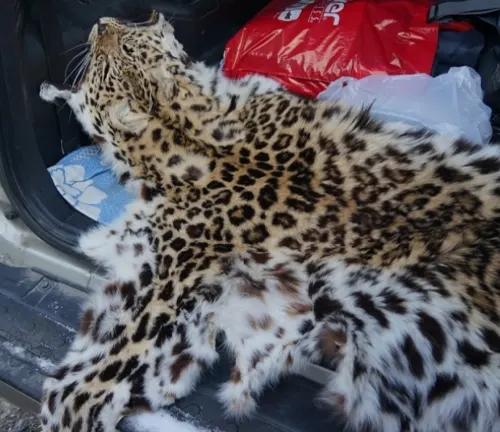
Habitat loss and degradation pose one of the most significant threats to the survival of the Amur Leopard. Deforestation, logging, agricultural expansion, and infrastructure development have led to the fragmentation and destruction of its forest habitat, reducing the availability of suitable territory and prey.
Poaching for its prized fur and body parts further compounds the challenges facing the Amur Leopard. Despite international regulations and efforts to curb illegal hunting, demand for leopard skins and bones persists in some parts of Asia, driving continued poaching activity and placing immense pressure on dwindling leopard populations.
Human-wildlife conflict also poses a significant threat to the survival of the Amur Leopard. Encroachment on its habitat by human activities such as logging, mining, and urbanization increases the likelihood of conflict between leopards and local communities, leading to retaliatory killings and further exacerbating population declines.
Climate change represents another emerging threat to the Amur Leopard’s survival. Rising temperatures, changing precipitation patterns, and habitat alteration disrupt the delicate balance of ecosystems, affecting prey populations, habitat suitability, and the leopard’s ability to adapt to changing environmental conditions.
Different Species
African Leopard
(Panthera pardus pardus)
Found across various habitats in Africa, including savannas, grasslands, and forests. It is the most widespread leopard subspecies.
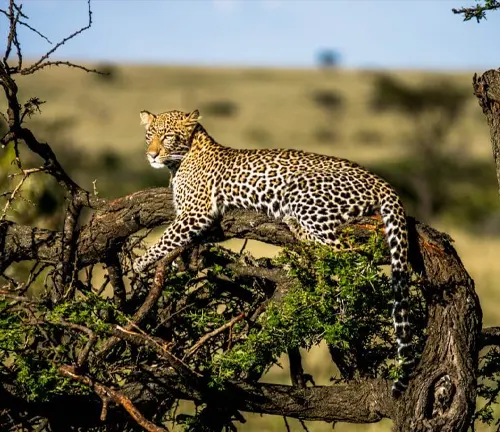
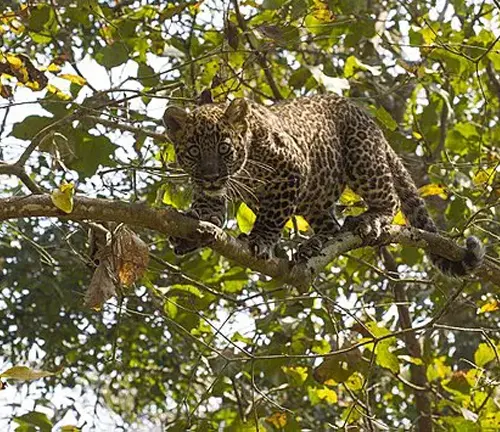
Indian Leopard
(Panthera pardus fusca)
Inhabits diverse habitats in the Indian subcontinent, ranging from tropical rainforests to arid landscapes.
Arabian Leopard
(Panthera pardus nimr)
Found in the Arabian Peninsula, specifically in mountainous regions with rugged terrain and sparse vegetation.
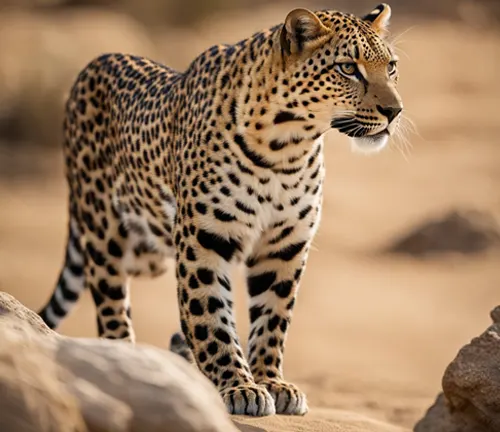
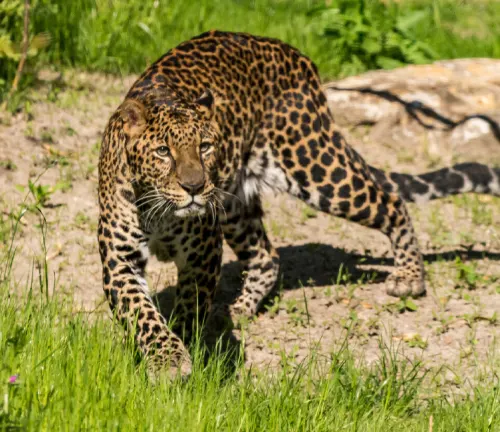
Javan Leopard
(Panthera pardus melas)
Native to the island of Java in Indonesia, this subspecies is critically endangered due to habitat loss and poaching.
Sri Lankan Leopard
(Panthera pardus kotiya)
Endemic to the island of Sri Lanka, where it inhabits a variety of habitats ranging from dry forests to mountainous regions.
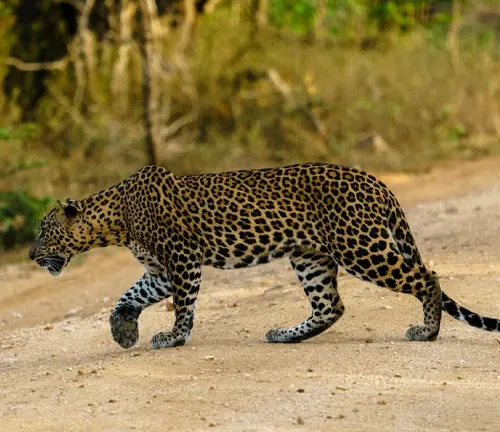

Indochinese Leopard
(Panthera pardus delacouri)
Found in parts of Southeast Asia, including Myanmar, Thailand, Laos, Vietnam, and southern China. It inhabits diverse habitats such as tropical rainforests and montane forests.
Frequently Asked Question (FAQs)
- What is the current population of Amur Leopards in the wild?
As of the latest estimates, there are fewer than 100 Amur Leopards remaining in the wild. - What are the main threats to Amur Leopard populations?
Habitat loss, poaching, and human-wildlife conflict are the primary threats facing Amur Leopards. - How do Amur Leopards contribute to their ecosystem?
As apex predators, Amur Leopards help regulate the populations of prey species and maintain the balance of their ecosystem. - What conservation organizations are working to protect the Amur Leopard?
Organizations such as the World Wildlife Fund (WWF) and the Amur Leopard and Tiger Alliance (ALTA) are actively involved in conservation efforts for the Amur Leopard. - What is being done to conserve the Amur Leopard population?
Conservation efforts include habitat protection, anti-poaching measures, community engagement, and research to better understand the needs and behavior of these elusive cats. - Where can I see Amur Leopards in the wild?
Due to their critically endangered status and remote habitat, sightings of Amur Leopards in the wild are extremely rare. However, some eco-tourism initiatives offer opportunities to observe them in managed conservation areas. - What can I do to help protect Amur Leopards?
Individuals can support conservation efforts by raising awareness, donating to reputable organizations, advocating for stronger wildlife protection laws, and making sustainable choices to reduce habitat destruction and poaching. - Are there any success stories in Amur Leopard conservation?
While the population remains critically endangered, conservation efforts have shown some positive results, including increases in population numbers in certain protected areas and successful breeding programs in captivity. - What role do local communities play in Amur Leopard conservation?
Engaging local communities in conservation efforts is essential for addressing human-wildlife conflicts, promoting sustainable land use practices, and garnering support for conservation initiatives. - How can I learn more about Amur Leopards and their conservation?
Interested individuals can find more information through reputable websites, scientific publications, documentaries, and by visiting accredited zoos or wildlife sanctuaries with educational programs focused on Amur Leopard conservation.



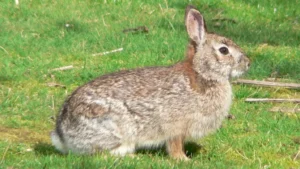








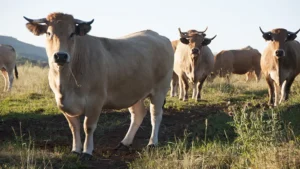
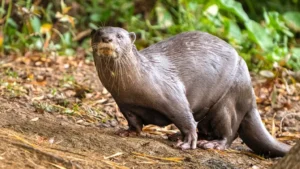
Leave your comment